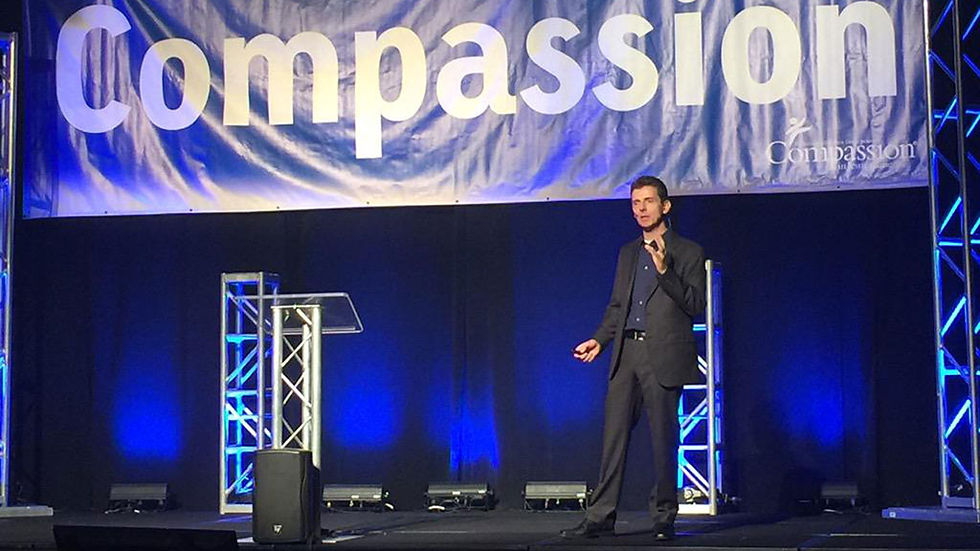Non-Commercial Christian Radio Had Better Worry About This
- mramsey1
- Jan 27, 2017
- 4 min read

I am blessed to do a lot of research work with Christian non-commercial broadcasters. As I travel around the country working with these amazing and passionate folks, I have discovered something unsettling – a trend that, I believe, should concern them a great deal.
Here’s what I hear:
Over time, the magnitude of giving is steady or rising, but the total number of givers is declining.
Also – as my own research shows – the age of the giving audience is not just a little older than the age of the listening audience; in many cases it’s a lot older.
If you’re a Christian non-com station, perhaps neither of these trends affects you (although I’m betting at least one of them does). But when you take them together they paint what I think is a terrifying picture that should provoke some deep thought and some major strategic action.
Here’s what it means: While some donors are more philanthropic than ever, they are masking the overall reduction in the number of listeners supporting the brand. Meanwhile, as the average age of the audience creeps up, the average age of donors is creeping up faster. That means donors are not only becoming more scarce they are becoming increasingly unlike the audience for the stations they are supporting.
In the short run, you can hide this by growing your Cume faster than your percentage of donors is shrinking. But in the long run, this is not sustainable.
You may believe that this is simply temporary; that younger listeners will grow into giving as their parents and grandparents before them did.
I think you will prove to be wrong.
It’s not that younger folks are or will be less generous than their older predecessors; it’s that they have new ways to give to things that matter to them, new ways to affiliate with those things, and many more things worth giving to than ever before.
And here’s another thing I believe wholeheartedly: Younger folks who are less attached to radio in general and radio stations in particular will be less likely to financially support those stations because they know they would be paying for what they can literally hear for free.
Younger audiences are more engaged by experiences than things. And they’re more engaged by experiences which invite them to participate than by those brands which exist and persist outside of their influence and are generally indifferent to it.
Younger audiences have an expectation that value will be transferred in both directions: When I give you something I get something in return, and it’s not the same thing that a listener gets who listens to you for free.
In other words, it’s less a model of pure giving and more a model of membership.
Consider what “membership” means in the digital space. Consider, for example, Kickstarter.
Let’s say an established podcast (like this one or this one) launches a Kickstarter or ongoing donor campaign to raise funds from its fans. As part of that program listeners receive valuable experiences or benefits at various tiers of giving. Perhaps the show host will record your voicemail message. Perhaps you’ll get tickets to a live show for free. Perhaps your name will be enshrined in the show notes. Etc.
Throughout the campaign the podcast folks keep in touch with their donors about the progress of the campaign, how their money is being spent, and the precise difference you – their members – are making in the world.
Now if this show is funded, it goes out into the world for free. But the folks who listen for free were not part of the campaign and did not share in the exchange of value with the brand. They are just listeners, not “co-creators” – not “members.” And plain old listeners don’t get the voicemail message, the free show tickets, the campaign updates, their name on the website, etc. Plain old listeners are not part of something larger because they didn’t fund the campaign.
They are just listeners, not members.
Some time ago I sat with a young guy who worked for a well-known “growth hacker.” His job was to grow digital startups and do it cheaply and fast. I outlined for him the non-commercial radio model, which he was not familiar with.
He looked at me, utterly befuddled.
“You mean you want people to pay for something that they can otherwise get for free?”
Um, yes, I’m afraid that’s what I mean.
“Why would they do that?”
Yes, I know there are, indeed, reasons why they would do that. But those reasons are more compelling for older audiences than younger ones, and the data seem to prove it.
So here’s the bottom line:
Younger people are different from older people. And while younger people will grow old, they will grow old differently from their parents. They will not grow into the habits of their elders.
Christian non-com stations will have to think less about donations and more about membership, less about giving and more about experiences, less about one-brand-one-product and more about a portfolio of products and services, less about pledge drives and more about exchanges of value, less about listeners and more about community, less about broadcasting and more about participation.





Comments